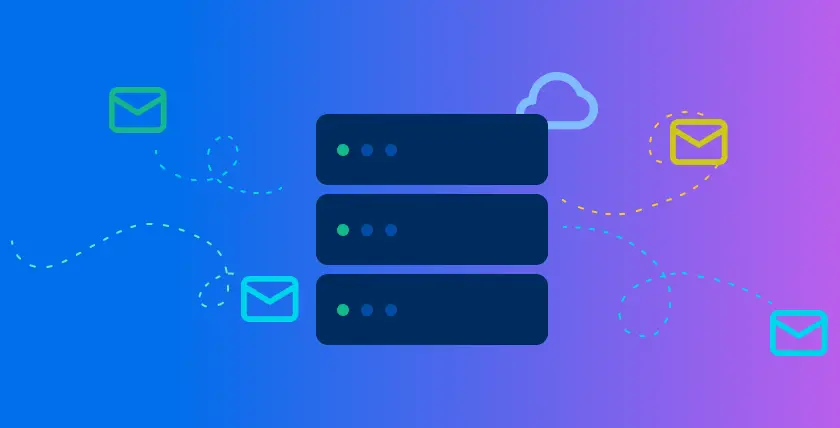
IMAP/SMTP injection is a form of email spoofing or hacking technique that allows an attacker to inject malicious content into an email message.
By exploiting vulnerabilities in the Internet Message Access Protocol (IMAP) and Simple Mail Transfer Protocol (SMTP), attackers can manipulate email headers and content to send deceptive or harmful emails.
In this blog post, we will explore the concept of IMAP/SMTP injection discussing its implications, how it works, and ways to prevent it.
What is IMAP injection?
IMAP injection, also known as IMAP command injection, is a security vulnerability that can be exploited in email clients or servers that support the Internet Message Access Protocol (IMAP).
It occurs when an attacker is able to inject and execute arbitrary IMAP commands on a vulnerable system.
IMAP is an email retrieval protocol that allows users to access and manage their email messages stored on a remote mail server. It provides a set of commands that clients can use to interact with the server, such as retrieving, deleting, or moving emails.
In the context of IMAP injection, an attacker can take advantage of a vulnerable application or server that fails to properly validate user input or filter malicious commands.
By injecting crafted IMAP commands, the attacker can manipulate the behavior of the email client or server, potentially leading to unauthorized actions or data manipulation.
What is the impact of IMAP injection vulnerability?
The consequences of a successful IMAP injection can vary depending on the specific vulnerabilities and the attacker’s intentions. Some potential risks and impacts of IMAP injection include:
1. Email manipulation
An attacker can modify or delete emails, potentially leading to data loss, unauthorized access to sensitive information, or tampering with email content.
2. Account takeover
By exploiting IMAP injection vulnerabilities, an attacker may gain unauthorized access to email accounts, enabling them to read, send, or forward emails on behalf of the victim.
3. Malware distribution
Attackers can use IMAP injection as a means to distribute malicious content or attachments through compromised email accounts.
4. Phishing attacks
IMAP injection can be leveraged to craft convincing phishing emails, tricking users into providing sensitive information or downloading malware.
5. System compromise
In some cases, successful IMAP injection can lead to the execution of arbitrary commands on the underlying email server, potentially allowing the attacker to gain control over the entire system.
Regular security assessments and penetration testing can help identify and address potential IMAP injection vulnerabilities.
By staying vigilant and proactive in implementing security measures, the risks associated with IMAP injection can be mitigated, helping to protect email systems and user data.
What is SMTP injection?
SMTP injection, also known as email header injection or mail command injection, is a security vulnerability that allows an attacker to manipulate the email headers and content of a message sent via the Simple Mail Transfer Protocol (SMTP).
SMTP is the standard protocol used for sending email messages between servers. It defines a set of commands and rules for how email servers communicate with each other to relay messages.
By exploiting weaknesses in SMTP implementation, an attacker can inject unauthorized content into an email, potentially leading to various malicious activities.
SMTP injection occurs when an attacker finds a vulnerability in an email server or application that allows them to inject arbitrary content into the email headers or body.
What is the impact of SMTP injection vulnerability?
The consequences of successful SMTP injection can be significant and may include:
1. Email spoofing
Attackers can forge email headers to make it appear as if the email is sent from a different sender.
This can be used for phishing attacks, where the attacker impersonates a trusted entity to trick recipients into revealing sensitive information or taking harmful actions.
2. Malicious content injection
By injecting malicious scripts or links into the email content, attackers can attempt to exploit vulnerabilities in recipients’ email clients or web browsers.
This can lead to the execution of unauthorized code, malware downloads, or further compromise of the recipient’s system.
3. Spamming and email flooding
SMTP injection can be used to send a large volume of unsolicited emails (spam) to numerous recipients, causing email servers to become overwhelmed or blacklisted.
4. Email hijacking
Attackers may inject commands that alter the behavior of email servers or clients, redirecting or intercepting legitimate emails to gain unauthorized access to sensitive information.
5. Email server compromise
In some cases, successful SMTP injection can lead to the execution of arbitrary commands on the email server, potentially enabling the attacker to gain control over the system or escalate privileges.
By implementing these preventive measures and maintaining regular security updates, organizations can significantly reduce the risk of SMTP injection vulnerabilities and protect their email infrastructure and users from potential harm.
How can you prevent IMAP/SMTP injection vulnerabilities?
Mitigating and preventing IMAP/SMTP injection vulnerabilities requires a combination of secure coding practices, proper configuration, and ongoing vigilance.
Here are several measures you can take to mitigate or prevent IMAP/SMTP injection attacks:
1. Input validation and sanitization
Implement strict input validation and sanitization mechanisms in email clients and servers to ensure that user-supplied data is properly validated and filtered.
This helps prevent the execution of unauthorized commands or the injection of malicious content.
2. Secure coding practices
Follow secure coding practices when developing email client and server software. This includes using parameterized queries, input/output encoding, and avoiding the concatenation of user input with commands or queries.
3. Patch and update
Keep all email software, including clients and servers, up to date with the latest security patches and updates. Regularly check for security advisories and apply patches promptly to address any identified vulnerabilities.
4. Least privilege principle
Assign appropriate access privileges to users, processes, and systems involved in email communication. Limit the permissions and privileges to only what is necessary for their intended functions, reducing the potential impact of a successful IMAP/SMTP injection attack.
5. Secure email server configuration
Ensure that your email servers are properly configured with secure defaults and recommended settings. This includes enforcing strong password policies, enabling encryption (such as TLS/SSL) for email communication, and implementing firewall rules to restrict unauthorized access.
6. Email gateway and filtering
Implement an email gateway or filtering solution that can scan incoming and outgoing emails for suspicious content, including potential IMAP/SMTP injection attempts.
This helps detect and block malicious emails before they reach the intended recipients.
7. Security awareness training
Educate email users about email security best practices, including recognizing phishing attempts, suspicious attachments, and unusual email content.
Regularly train users to be cautious when opening or responding to emails, especially those that appear suspicious or unexpected.
8. Regular security assessments
Conduct regular security assessments and penetration testing to identify and address any vulnerabilities or weaknesses in email systems. You can make use of an automated penetration testing platform like Beagle Security for this.
This helps proactively identify and remediate potential IMAP/SMTP injection risks.
9. Monitoring and logging
Implement robust monitoring and logging mechanisms to track and analyze email traffic for any suspicious activities or anomalies.
This helps in detecting and responding to IMAP/SMTP injection attacks on time.
10. Vendor security guidelines
Follow the security guidelines provided by email client and server software vendors. They often offer best practices and recommendations to secure their products effectively.
By implementing these preventive measures and maintaining a proactive approach to email security, you can significantly reduce the risk of IMAP/SMTP injection vulnerabilities and protect your email infrastructure and users from potential harm.

![Top 10 penetration testing companies [2025] Top 10 penetration testing companies [2025]](https://beaglesecurity.com/blog/images/blog-banner-three-840.webp)
![Top cybersecurity companies in India [2025] Top cybersecurity companies in India [2025]](https://beaglesecurity.com/blog/images/blog-banner-two-840.webp)


